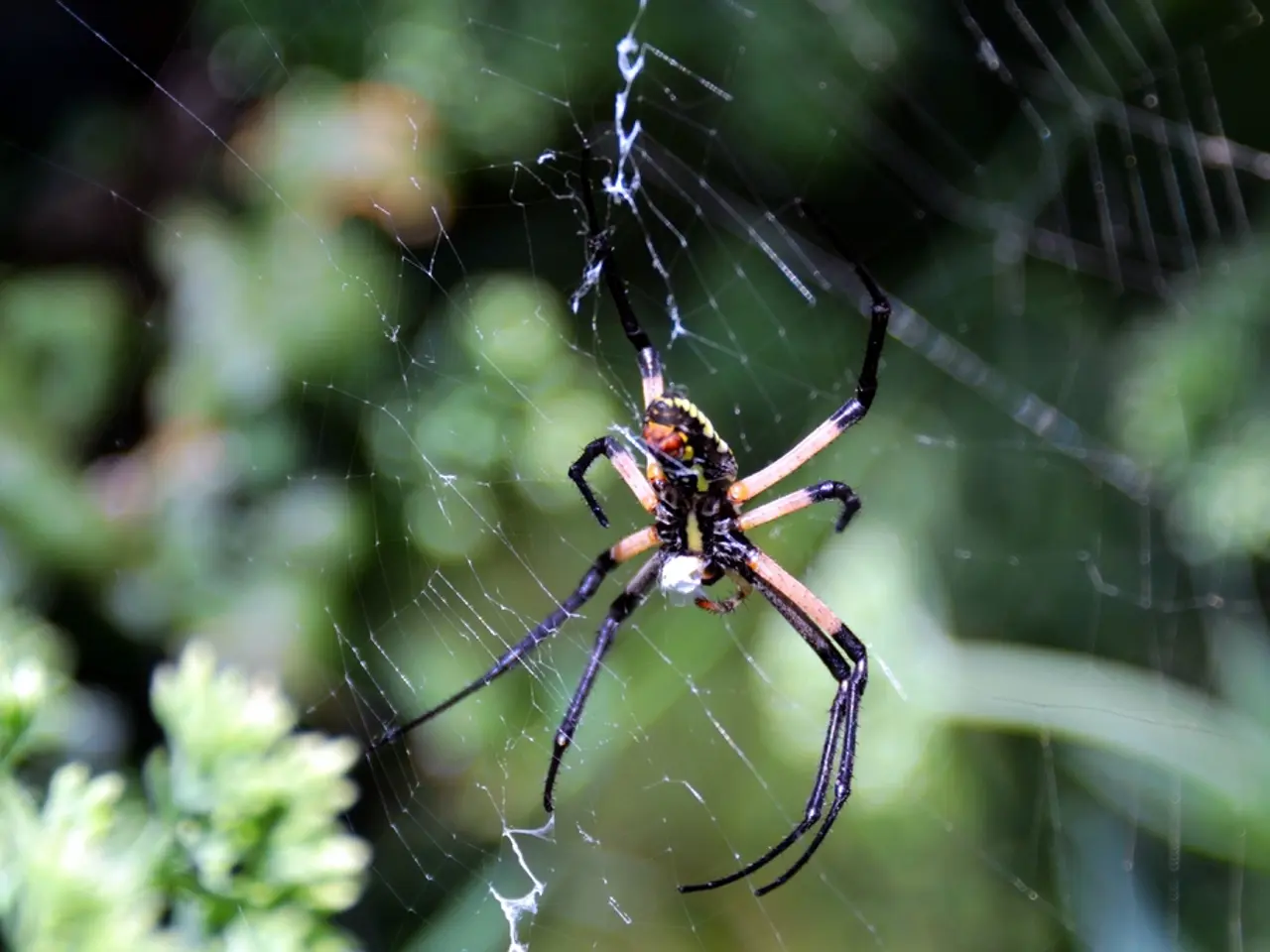Newly Found Blue Tarantulas Joined by Companions in South American Wilderness
In the heart of Guyana's Kaieteur National Park and Upper Potaro River region, a previously unknown tarantula species with cobalt blue iridescent legs has been unearthed. This exciting discovery was part of a larger biodiversity survey conducted by the WWF and Global Wildlife Conservation's Biodiversity Survey Team.
The survey, which took place in an upland region considered a biodiversity hotspot, resulted in over 30 newly discovered species. These include three plants, a crab, a shrimp, a frog, several dragonflies, and numerous water beetles. The blue tarantula, with its striking appearance, serves as a charismatic ambassador for often-overlooked invertebrate species.
The blue tarantula is not the first species with such vibrant coloration, but its blue hue is not shared by close relatives, making it a subject of scientific interest. The vibrant coloration may serve a critical function other than sexual selection, a topic of ongoing research.
The discovery of this new species comes at a critical time for Guyana's forests, which face intense pressure from gold mining operations. Gold mining operations threaten biodiversity through habitat destruction and environmental contamination from mercury. The conservation of Guyana's forests and their biodiversity requires the collaboration of local communities, government agencies, and industry representatives.
Indigenous communities, with their generations of knowledge about local ecosystems, play a particularly important role in conservation efforts. Their unique insights can help protect the diverse species found in the region, including the newly discovered blue tarantula.
The blue tarantula is a member of the Cyriopagopus genus, known for their diverse coloration that can include shades of blue. However, the specific species discovered in Guyana remains unidentified at this time. The Cobalt Blue Tarantula (Cyriopagopus lividus) is a known species, famous for its striking blue coloration, though it is not specifically linked to Guyana.
Tarantulas, known for their diverse coloration and carnivorous diet, act as predators, helping to regulate insect populations in their ecosystems. Many tarantula species face threats due to habitat loss and illegal pet trade, making new discoveries like the blue tarantula crucial for conservation efforts.
In conclusion, the discovery of the blue tarantula underscores the importance of continued research and conservation efforts. As we are losing species before we even know they exist, it is essential to protect and study these unique ecosystems to ensure their survival for future generations.
- The charismatic blue tarantula, discovered in Guyana's Kaieteur National Park, is a fascinating addition to the realm of environmental-science, particularly as it is a newly identified species within the Cyriopagopus genus.
- The health-and-wellness benefits of maintaining biodiversity can also be considered, as the blue tarantula, with its critical role as a ecological predator, serves to maintain the balance of insect populations, contributing to overall ecosystem health.
- In education-and-self-development, the blue tarantula's discovery can inspire a sense of wonder and encourage further interest in science, particularly in the field of arachnid biology and environmental conservation.
- Meanwhile, in the realm of general-news and entertainment, the blue tarantula serves as a captivating story, highlighting the ongoing efforts to uncover the mysteries of our planet, while also emphasizing the need for conservation and environmental awareness, particularly in regions like Guyana's Upper Potaro River area.




